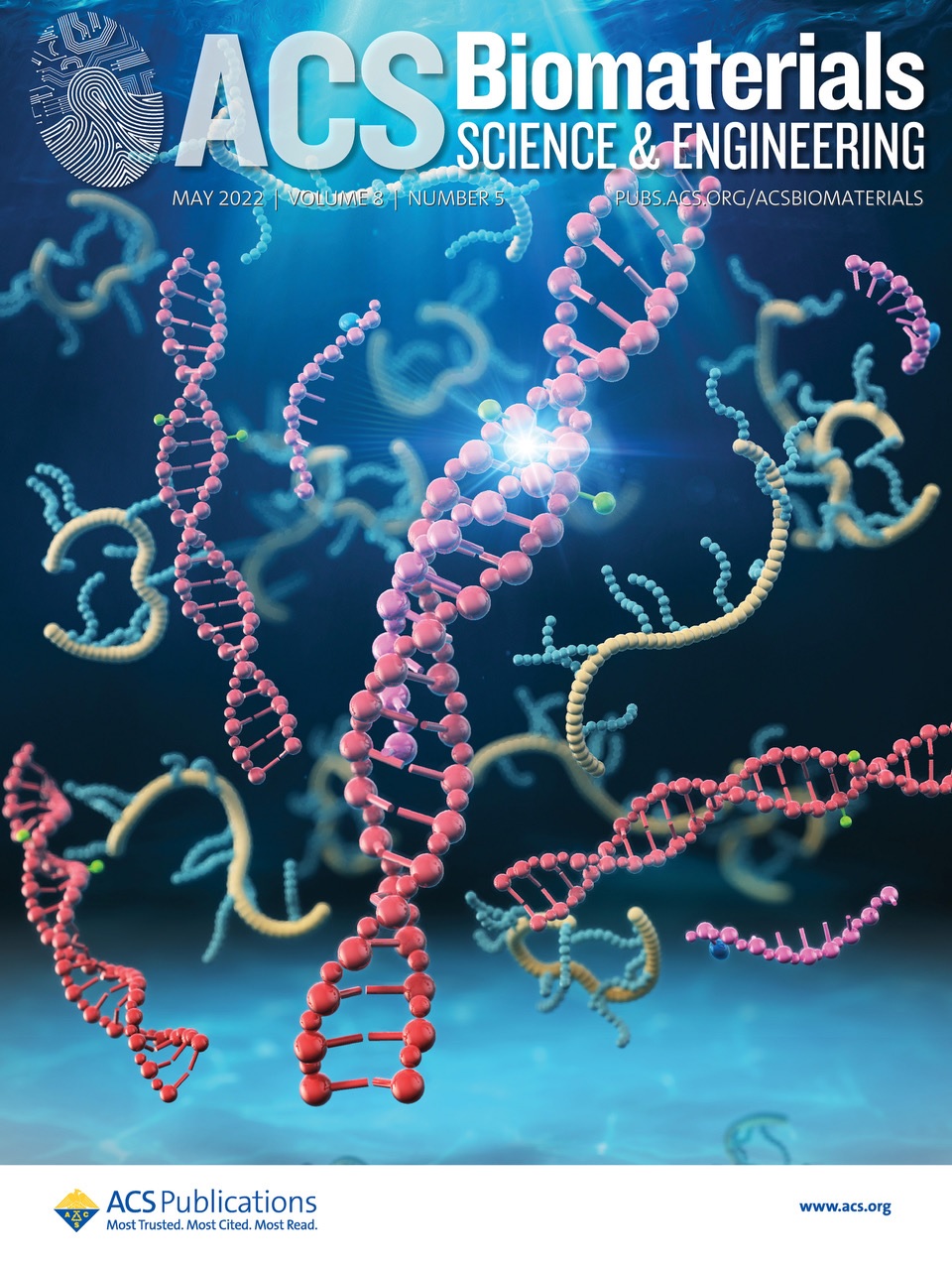Biodegradable Persistent ROS-Generating Nanosonosensitizers for Enhanced Synergistic Cancer Therapy by Inducing Cascaded Oxidative Stress
IF 5.4
2区 医学
Q2 MATERIALS SCIENCE, BIOMATERIALS
引用次数: 0
Abstract
Sonodynamic therapy (SDT) is gaining popularity in cancer treatment due to its superior controllability and high tissue permeability. Nonetheless, the efficacy of SDT is severely diminished by the transient generation of limited reactive oxygen species (ROS). Herein, we introduce an acid-activated nanosonosensitizer, CaO2@PCN, by the controllable coating of porphyrinic metal-organic frameworks (PCN-224) on CaO2 to induce cascaded oxidative stress in tumors. The PCN-224 doping could generate ROS during SDT to induce intracellular oxidative stress and abnormal calcium channels. Meanwhile, the ultrasound also promotes extracellular calcium influx. In addition, the CaO2@PCN will sequentially degrade in the tumor cell lysosomes, releasing Ca2+ and H2O2 to induce further abnormal calcium channels and elevate the levels of Ca2+. Insufficient catalase (CAT) in tumor cells promotes intracellular calcium overload, which can induce persistent ROS generation and mitochondrial dysfunction through ion interference therapy (IIT). More importantly, PCN-224 also protects CaO2 against significant degradation under neutral conditions. Hence, the well-designed CaO2@PCN produces synergistic SDT/IIT effects and persistent ROS against cancer. More notably, the acidity-responsive biodegradability endows CaO2@PCN with excellent biosafety and promising clinical potential.通过诱导级联氧化应激增强癌症协同治疗的可生物降解持久性 ROS 生成纳米声纳敏化剂
声动力疗法(SDT)因其卓越的可控性和高组织渗透性,在癌症治疗中越来越受欢迎。然而,有限活性氧(ROS)的短暂生成严重削弱了声动力疗法的疗效。在此,我们通过在 CaO2 上可控地包覆卟啉金属有机框架(PCN-224),引入了一种酸激活纳米声纳敏化剂 CaO2@PCN,以诱导肿瘤中的级联氧化应激。PCN-224 掺杂可在 SDT 过程中产生 ROS,诱导细胞内氧化应激和钙通道异常。同时,超声还能促进细胞外钙离子流入。此外,CaO2@PCN 会在肿瘤细胞溶酶体中依次降解,释放出 Ca2+ 和 H2O2,进一步诱导钙通道异常和 Ca2+ 水平升高。肿瘤细胞中过氧化氢酶(CAT)不足会促进细胞内钙超载,从而通过离子干扰治疗(IIT)诱发持续的 ROS 生成和线粒体功能障碍。更重要的是,PCN-224 还能保护 CaO2 在中性条件下不被大量降解。因此,精心设计的 CaO2@PCN 可产生 SDT/IIT 协同效应和持久的 ROS 抗癌作用。更值得注意的是,酸性响应生物降解性使 CaO2@PCN 具有极佳的生物安全性和广阔的临床应用前景。
本文章由计算机程序翻译,如有差异,请以英文原文为准。
求助全文
约1分钟内获得全文
求助全文
来源期刊

ACS Biomaterials Science & Engineering
Materials Science-Biomaterials
CiteScore
10.30
自引率
3.40%
发文量
413
期刊介绍:
ACS Biomaterials Science & Engineering is the leading journal in the field of biomaterials, serving as an international forum for publishing cutting-edge research and innovative ideas on a broad range of topics:
Applications and Health – implantable tissues and devices, prosthesis, health risks, toxicology
Bio-interactions and Bio-compatibility – material-biology interactions, chemical/morphological/structural communication, mechanobiology, signaling and biological responses, immuno-engineering, calcification, coatings, corrosion and degradation of biomaterials and devices, biophysical regulation of cell functions
Characterization, Synthesis, and Modification – new biomaterials, bioinspired and biomimetic approaches to biomaterials, exploiting structural hierarchy and architectural control, combinatorial strategies for biomaterials discovery, genetic biomaterials design, synthetic biology, new composite systems, bionics, polymer synthesis
Controlled Release and Delivery Systems – biomaterial-based drug and gene delivery, bio-responsive delivery of regulatory molecules, pharmaceutical engineering
Healthcare Advances – clinical translation, regulatory issues, patient safety, emerging trends
Imaging and Diagnostics – imaging agents and probes, theranostics, biosensors, monitoring
Manufacturing and Technology – 3D printing, inks, organ-on-a-chip, bioreactor/perfusion systems, microdevices, BioMEMS, optics and electronics interfaces with biomaterials, systems integration
Modeling and Informatics Tools – scaling methods to guide biomaterial design, predictive algorithms for structure-function, biomechanics, integrating bioinformatics with biomaterials discovery, metabolomics in the context of biomaterials
Tissue Engineering and Regenerative Medicine – basic and applied studies, cell therapies, scaffolds, vascularization, bioartificial organs, transplantation and functionality, cellular agriculture
 求助内容:
求助内容: 应助结果提醒方式:
应助结果提醒方式:


